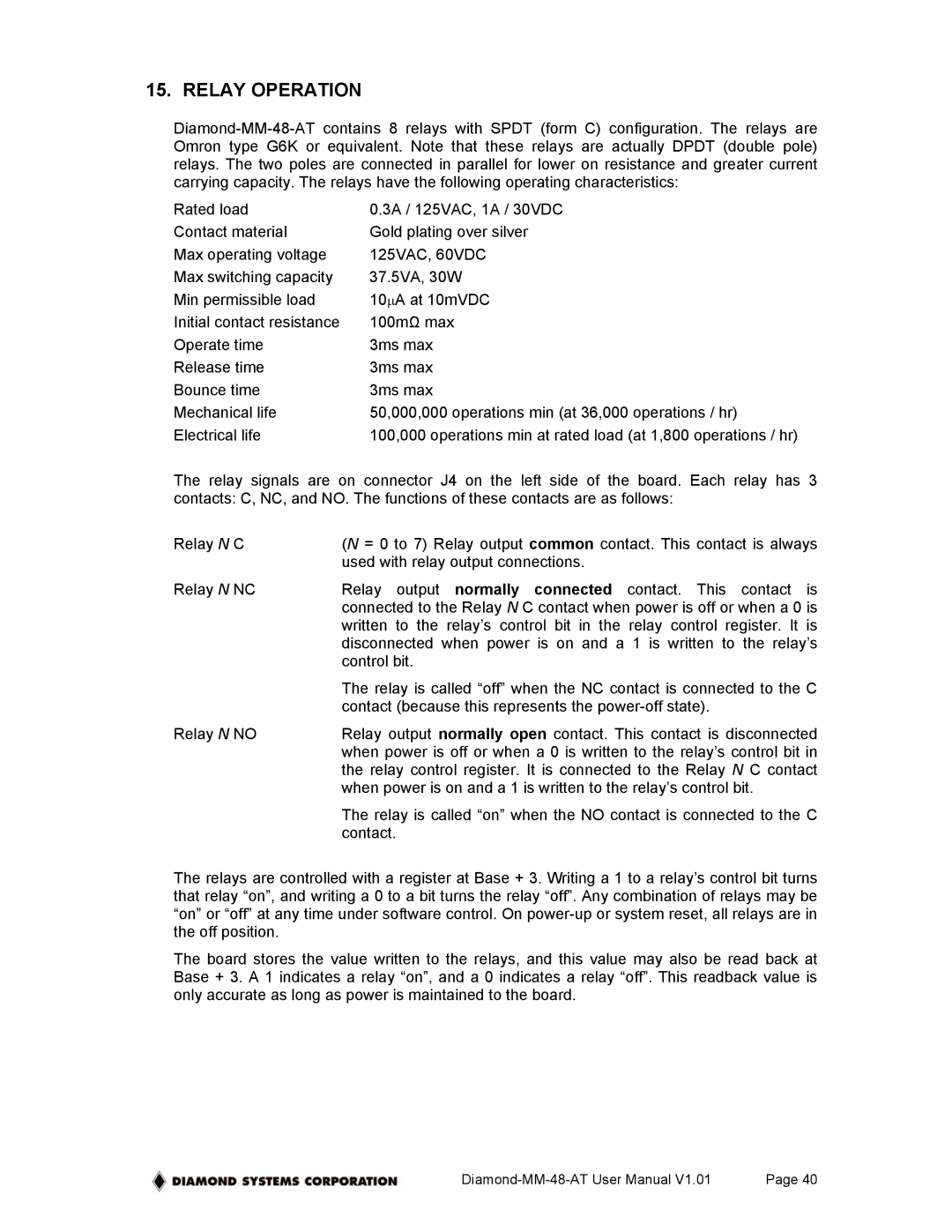15. RELAY OPERATION
Rated load | 0.3A / 125VAC, 1A / 30VDC |
Contact material | Gold plating over silver |
Max operating voltage | 125VAC, 60VDC |
Max switching capacity | 37.5VA, 30W |
Min permissible load | 10∝A at 10mVDC |
Initial contact resistance | 100mΩ max |
Operate time | 3ms max |
Release time | 3ms max |
Bounce time | 3ms max |
Mechanical life | 50,000,000 operations min (at 36,000 operations / hr) |
Electrical life | 100,000 operations min at rated load (at 1,800 operations / hr) |
The relay signals are on connector J4 on the left side of the board. Each relay has 3 contacts: C, NC, and NO. The functions of these contacts are as follows:
Relay N C | (N = 0 to 7) Relay output common contact. This contact is always |
| used with relay output connections. |
Relay N NC | Relay output normally connected contact. This contact is |
| connected to the Relay N C contact when power is off or when a 0 is |
| written to the relay’s control bit in the relay control register. It is |
| disconnected when power is on and a 1 is written to the relay’s |
| control bit. |
| The relay is called “off” when the NC contact is connected to the C |
| contact (because this represents the |
Relay N NO | Relay output normally open contact. This contact is disconnected |
| when power is off or when a 0 is written to the relay’s control bit in |
| the relay control register. It is connected to the Relay N C contact |
| when power is on and a 1 is written to the relay’s control bit. |
| The relay is called “on” when the NO contact is connected to the C |
| contact. |
The relays are controlled with a register at Base + 3. Writing a 1 to a relay’s control bit turns that relay “on”, and writing a 0 to a bit turns the relay “off”. Any combination of relays may be “on” or “off” at any time under software control. On
The board stores the value written to the relays, and this value may also be read back at Base + 3. A 1 indicates a relay “on”, and a 0 indicates a relay “off”. This readback value is only accurate as long as power is maintained to the board.
Page 40 |
